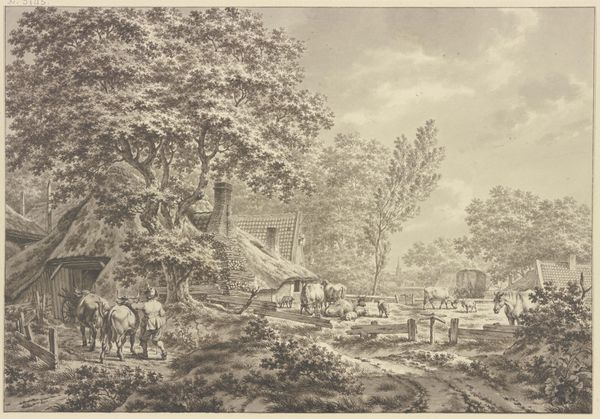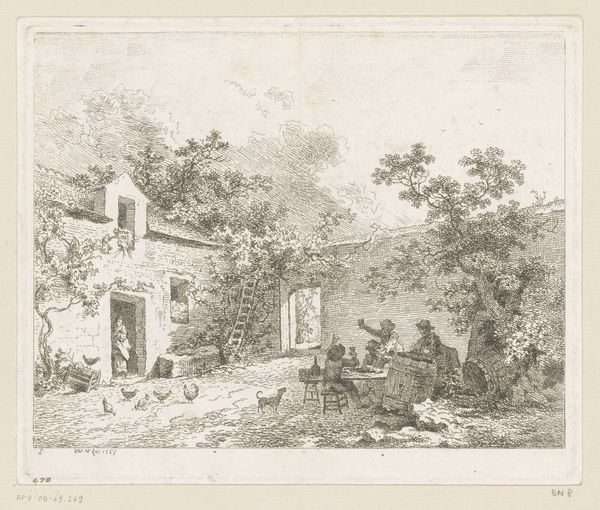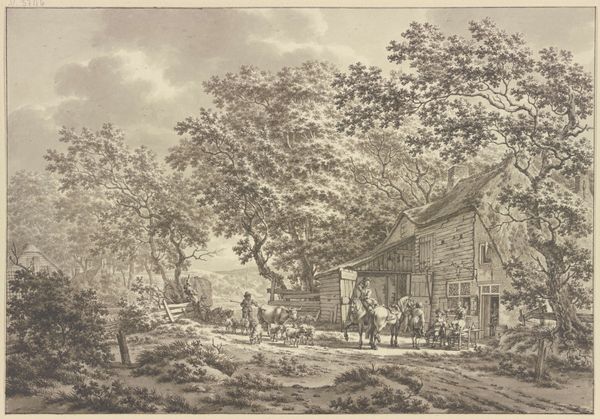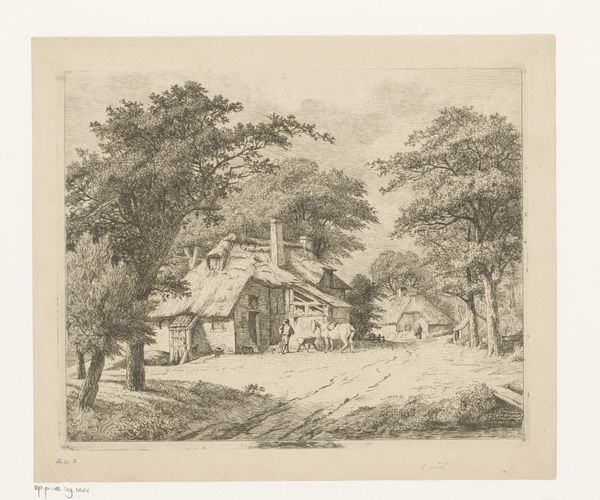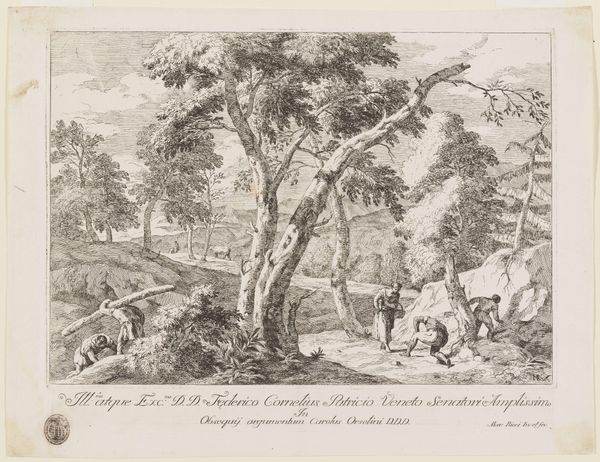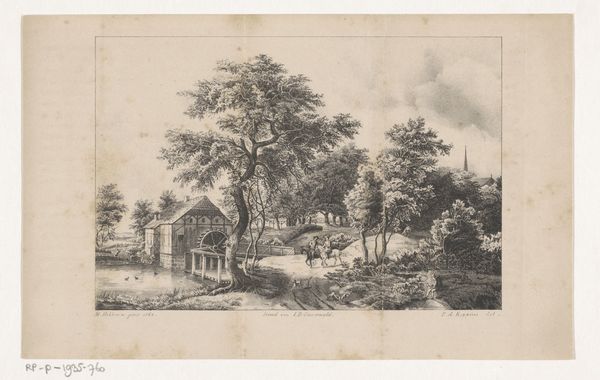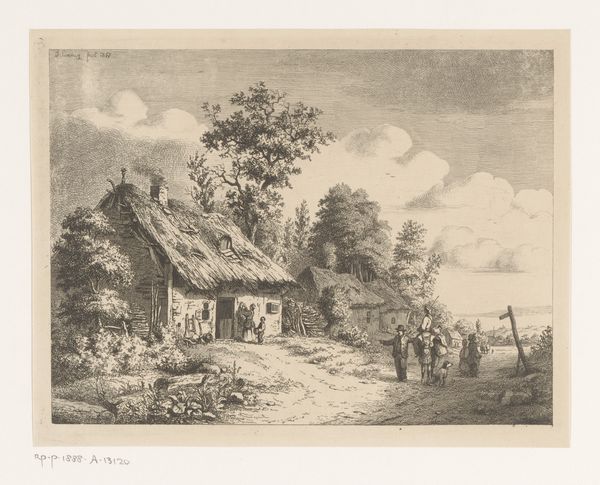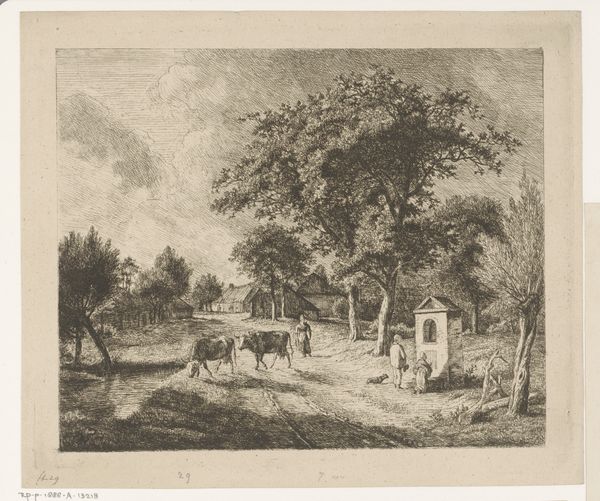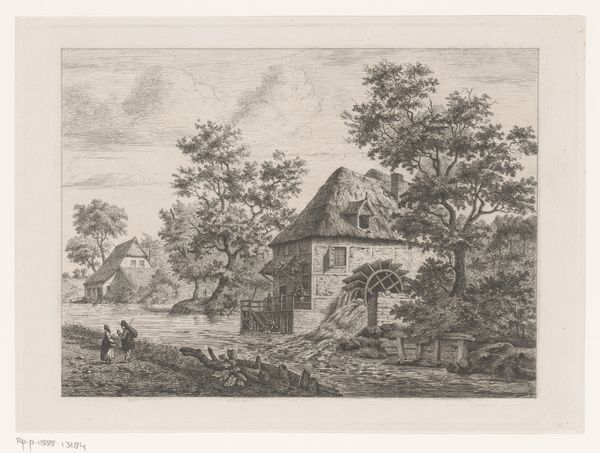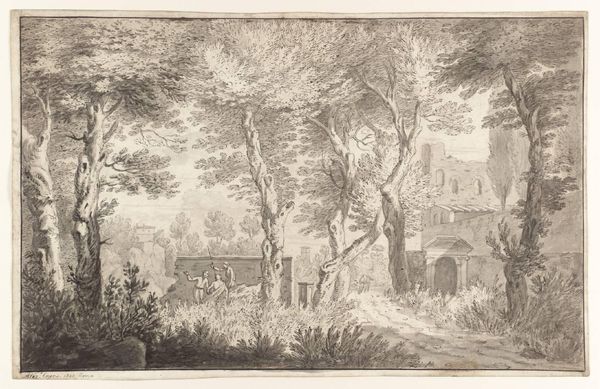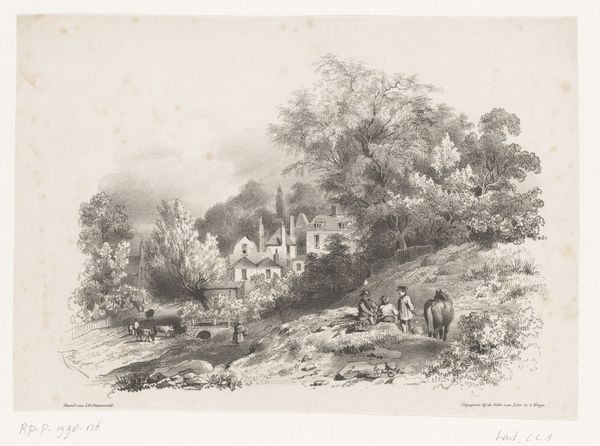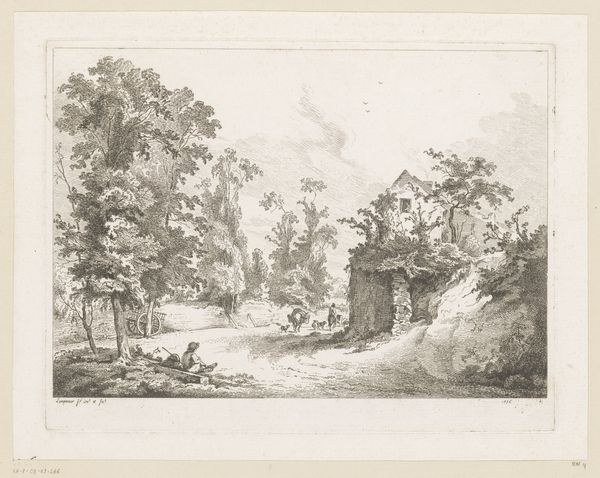
The Gamekeeper's Cottage, from the Album of 1826 1826
0:00
0:00
drawing, lithograph, print
#
drawing
#
lithograph
# print
#
landscape
#
genre-painting
#
realism
Dimensions: 171 × 222 mm (image); 190 × 236 mm (sheet)
Copyright: Public Domain
Editor: This is "The Gamekeeper's Cottage, from the Album of 1826," a lithograph by Nicolas Toussaint Charlet. The cottage has an almost fairytale-like quality, but there's a darker element at play with the armed gamekeepers in the lower corner. What historical context can we explore when we look at this image? Curator: Considering that gamekeepers regulated hunting—a privilege of the aristocracy—how does this imagery reflect existing power structures of the 19th century? It's easy to see it as a harmless landscape, but what underlying social narratives do you think Charlet engages with? Editor: It's easy to miss, but those men represent authority over land and access. Does Charlet take a clear position on this? Curator: That’s a question worth pondering! Charlet often depicted military and everyday life with a certain… sympathy for the common person, which could signal a subtle critique of aristocratic privilege. Do you think his choice of lithography, a more accessible printmaking technique, also plays into that? Editor: Absolutely! Lithography allowed for wider distribution, bringing these images to a larger audience and fostering discussion. Perhaps his intention was not to criticize the system openly, but to represent its functionaries? It would give insight to their lives, even though they helped facilitate inequality. Curator: Precisely! Charlet might be using realism, a focus on truth in art, to reflect socio-political tensions related to land ownership. Do you notice anything about the cottage itself? Editor: It’s small, crumbling slightly, overshadowed by nature, a little worn down compared to the vast forest and aristocratic hunters guarding the periphery of that space. This artwork depicts people in the landscape, rather than a "pure" landscape for pure aesthetic appreciation. Curator: Right. By focusing on the setting and class dynamics, we understand landscape beyond visual pleasure and address inequalities related to access and social class that might have existed. Editor: This gives me a new lens for looking at supposedly simple landscape pieces! Curator: Indeed, questioning whose perspective is presented can uncover critical meanings in even the most unassuming artworks.
Comments
No comments
Be the first to comment and join the conversation on the ultimate creative platform.
